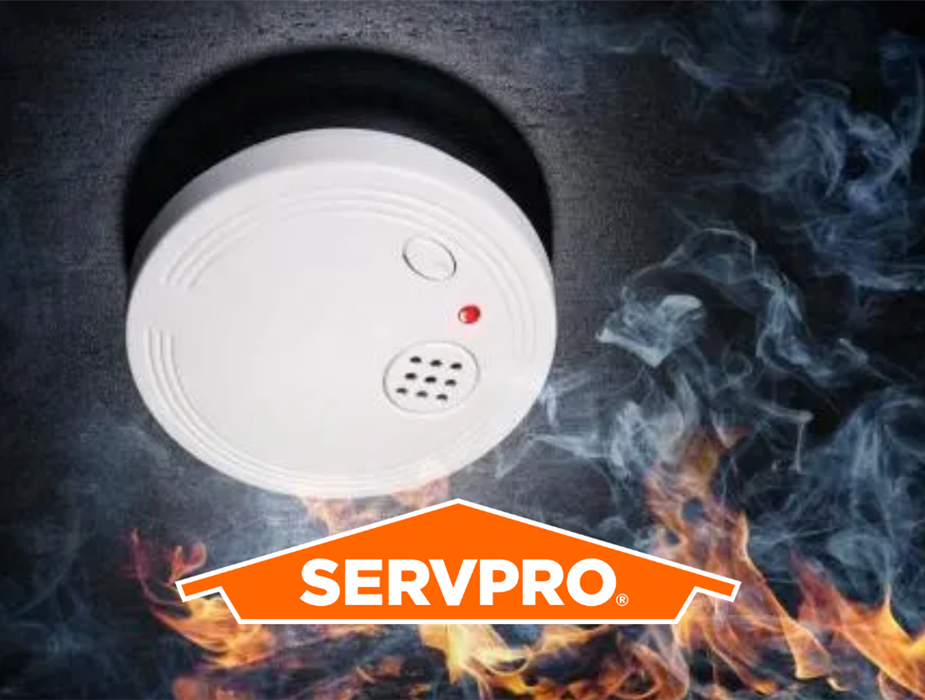The One Tricky Thing About Smoke Detectors
5/20/2022 (Permalink)
As essential as they are, smoke detectors aren’t foolproof. According to the National Fire Protection Association (NFPA), dead batteries are responsible for one-quarter of all the U.S. home fires in America in which smoke detectors fail—and missing or unplugged batteries account for half. It is so important that you properly choose, install and maintain the smoke alarms in your house.
Choose and Buy
To give your family the best chance of escaping a fire, start by purchasing the right kind of smoke detector.
- Smoke detectors are powered either by a battery or are hardwired into your house’s electrical system (typically with battery backup). According to the NFPA, all of the smoke alarms throughout your house should be interconnected through hardwiring or a wireless signal, so that when one alarm sounds, they all sound. (New homes are required to include hardwired, interconnected smoke alarms with backup batteries.) If your home is not already hardwired, you can buy detectors that interconnect wirelessly.
- If your smoke alarm isn’t a dual model with a built-in CO detector (which alerts you to dangerous levels of this deadly gas), you’ll also need to purchase a separate CO alarm. Install CO alarms outside all sleeping areas and on every level of the home.
- Smoke detectors use two kinds of sensors: ionization and photoelectric. Ionization sensors are better at detecting flaming fires, while photoelectric sensors are better at detecting smoldering fires. Ideally, you should purchase a dual-sensor model, which uses both technologies. Otherwise, purchase and install both ionization and photoelectric alarms in your home.
Hang ’Em High
- The NFPA recommends placing a smoke detector inside every bedroom, outside every sleeping area and on every level of your home, including the basement.
- Place the alarms high on the wall, leaving no more than 12 inches from the top of the alarm to the ceiling.
- To avoid false alarms, position units at least 10 feet from cooking appliances and 3 feet from bathrooms that have a shower or tub (because steam can trigger alarms).
Don’t Let Them Die
- Replace your smoke detector’s batteries every year.
- If you hear chirps from your battery-powered or battery-backup smoke detector, replace the batteries right away. Never unplug it to mute the sound.
- Test your smoke alarms each month. Press the test button to be sure the alarm sounds, and if it doesn’t, replace the battery. If the detector still doesn’t work, replace the whole unit.
- Smoke detectors have a lifespan of ten years, while those with built-in CO detectors last five to seven years. Replace them at least that often.
Face it: smoke detectors are the ultimate low-investment/high-impact device: buy them, install them and tend to them once in a while—and, if a fire breaks out in your home, they may very well save your life and a fire damaged property!
When you have suffered a fire or other disaster at your home or business, call SERVPRO of Glastonbury/Wethersfield today at 860-633-8791
We’re Here to Help
After a fire, the team at SERVPRO of Glastonbury/Wethersfield uses specialized fire restoration training and experience to quickly clean up and restore your home to pre-fire condition. Call SERVPRO of Glastonbury/Wethersfield (860.633.8791) any time.
SERVPRO of Glastonbury/Wethersfield
IICRC Certified
Noemi Garcia
Franchise Owner
Call 860.633.8791
Fax 860.216.2762
24-hour emergency service






 24/7 Emergency Service
24/7 Emergency Service
